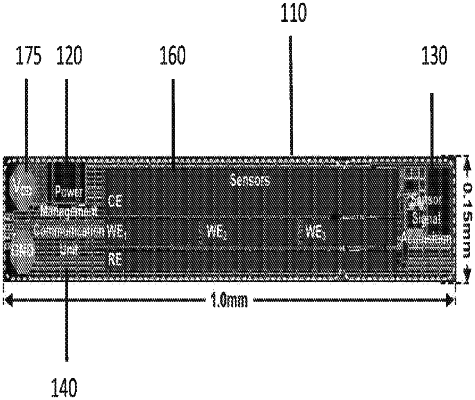| CPC A61B 5/14532 (2013.01) [A61B 5/0004 (2013.01); A61B 5/14865 (2013.01); A61B 5/6849 (2013.01)] | 3 Claims |

|
1. A glucose sensor system comprising:
a transmitter for containing a battery, the transmitter being for placement on top of patient skin;
a transcutaneous connector comprising at least one conductive path; and
an implantable monolithic integrated circuit for placement beneath the patient skin, wherein the implantable monolithic integrated circuit comprises a potentiostat and an electrochemical element, said electrochemical sensing element comprising at least one working electrode patterned to increase surface area and coated with a chemistry which converts glucose concentration into current;
wherein the potentiostat is electrically coupled to the transmitter via the transcutaneous connector, and the electrochemical sensing element is configured to sense glucose concentration and generate an electric signal representative of the glucose concentration, and wherein the potentiostat is electrically connected to the electrochemical sensing element.
|